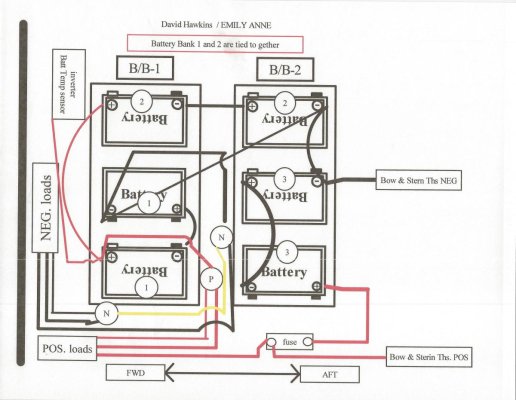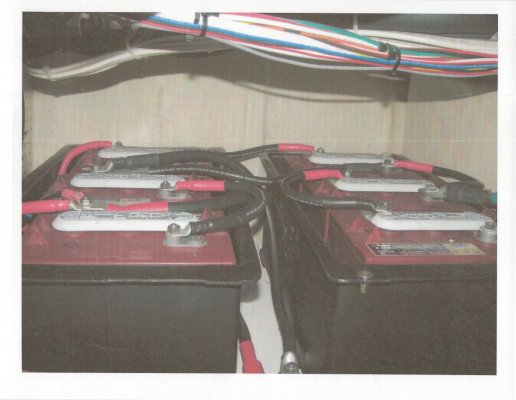Why? Is it because they're cheaper to buy?
The biggest advantage of AGM is their more rapid charge rate.
Few folks are willing to spend the $$$$ to be able to bring a 50% SOC set of house batts to 85 or 90% SOC in a short time.
With out 200+ amps of temperature monitoring charge rate aboard , why pay for what cant be used?
I would rather spend the bucks on bigger LA wet batts.
For the truly affluent the newest LI batts can take a huge charge in 15 min , IF you have the charge amps, and $20 Grand for the batts.
I know all the advantages and disadvantages and agree FF.
Sort of like all the other discussions about everything from anchors to oils.
My best friend has a nearly new $300,000 42 foot Catalina. Everytime he goes to a boat show...new toys and new systems and upgrades...new anchors, Mobil 1, expensive inverters, new genset ,,,etc...etc ...and is chattering away solar and wind power (never married, no kids...

). In the 4 years he has owned the boat he has maybe 100 hours and ZERO nights at anchor).
He bought it from the other guy who swore it would be "his last, retirement, cruiser" who took a job in India and never really cruised the boat....and he bought it with every option possible and was adding stuff as he sold it to my friend.
Two guys who "love" gadgets. My buddy doesn't even understand most of how his systems work and certainly not how they work or not together. Yet he is the perfect candidate to "be sold" on anything new.
I see a LOT of boaters who are exactly the same way...maybe for different reasons...but wind up with the same stuff, boating the same ways.
I spend a lot of time sitting down with these types and penciling out the cost advantages of one system over another...then usually lose then trying to explain why the advantage is lost when they don't upgrade something else...but I'm usually wasting my breath as it happens because they LOVE to talk anbout their new XYZ at happy hour....which is usually back at the home dock and not the cruising grounds.
Oh by the way...the $300,000 outfitted to the teeth boat....when we moved it to Charleston...I had to bring MY PLB along as one thing the boat doesn't have is an EPIRB...go figure...






